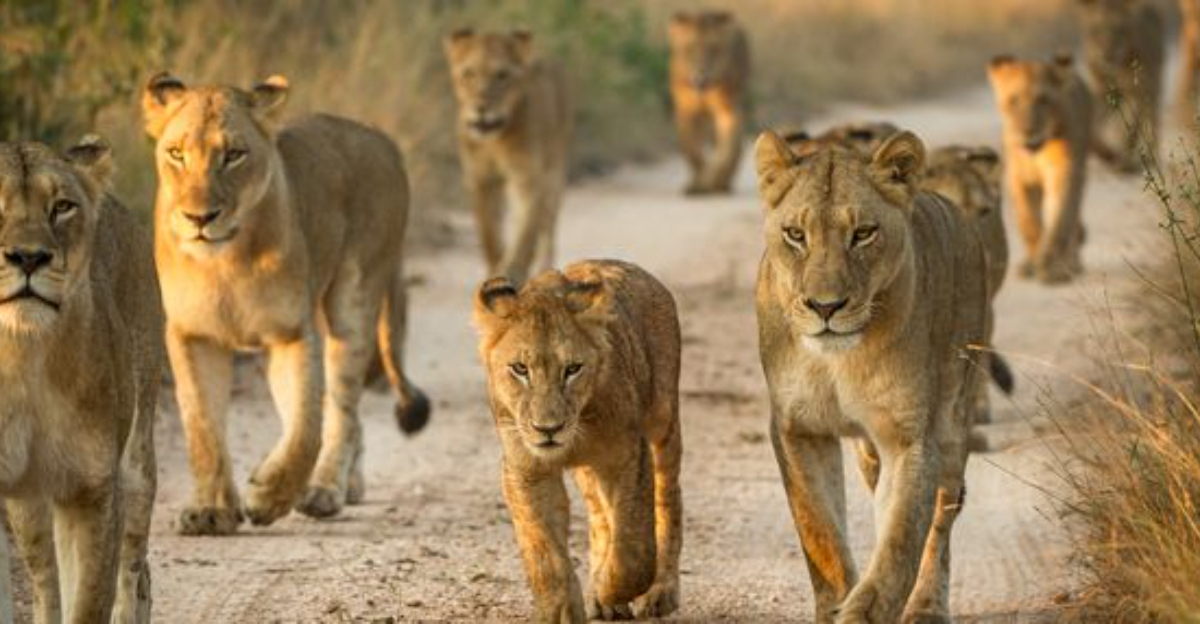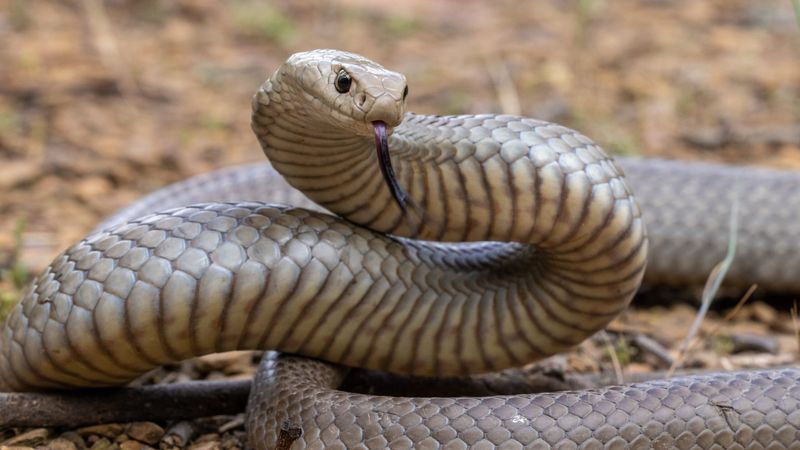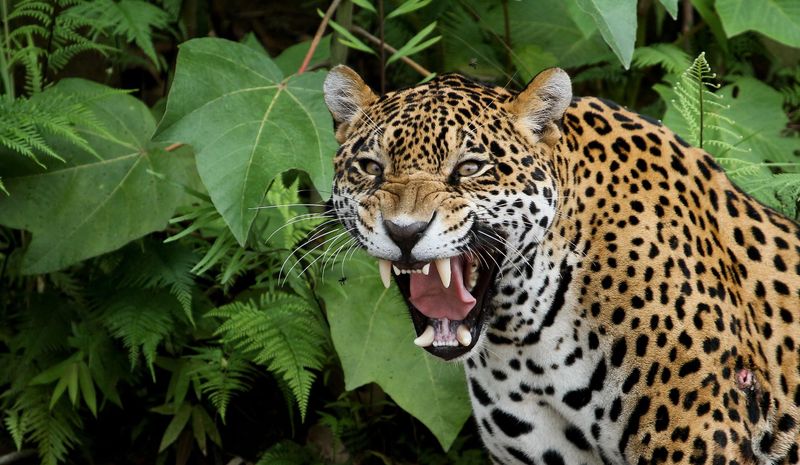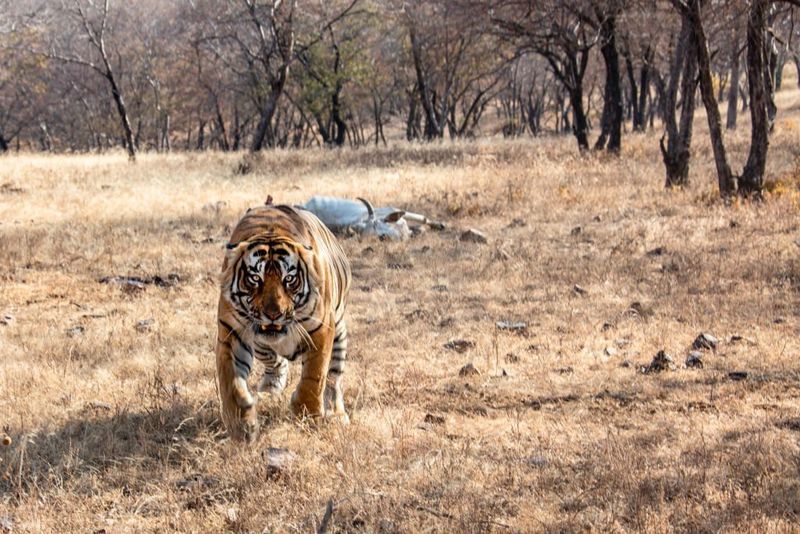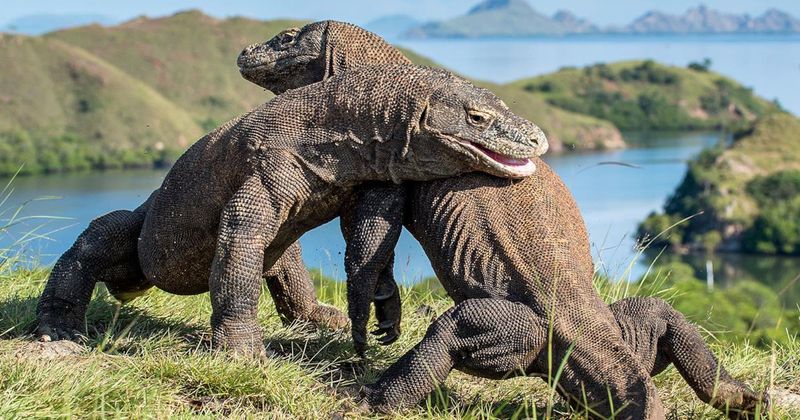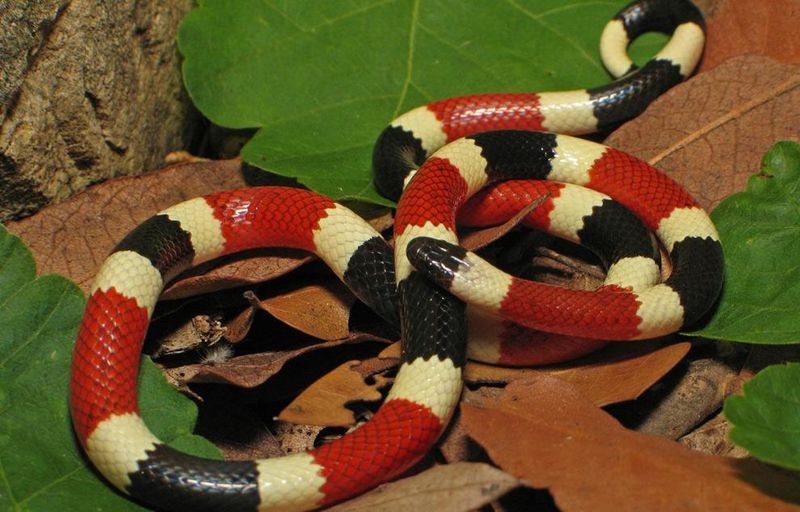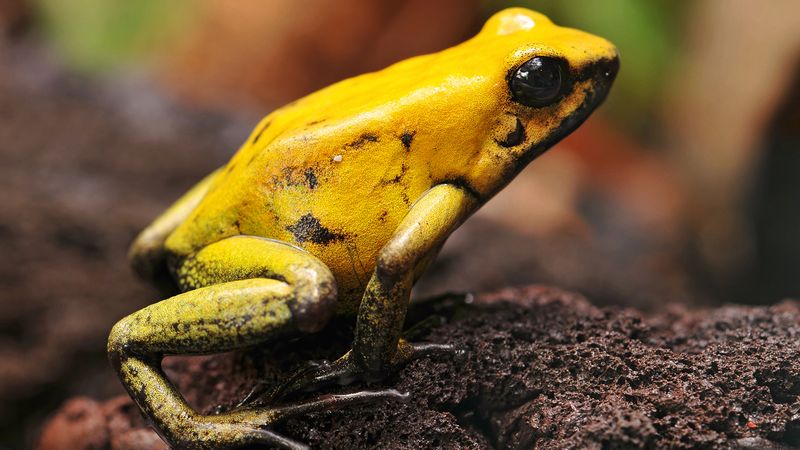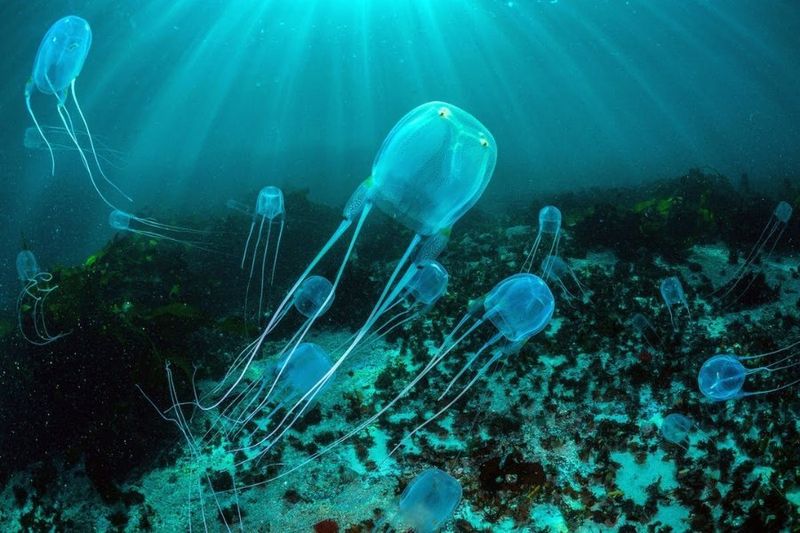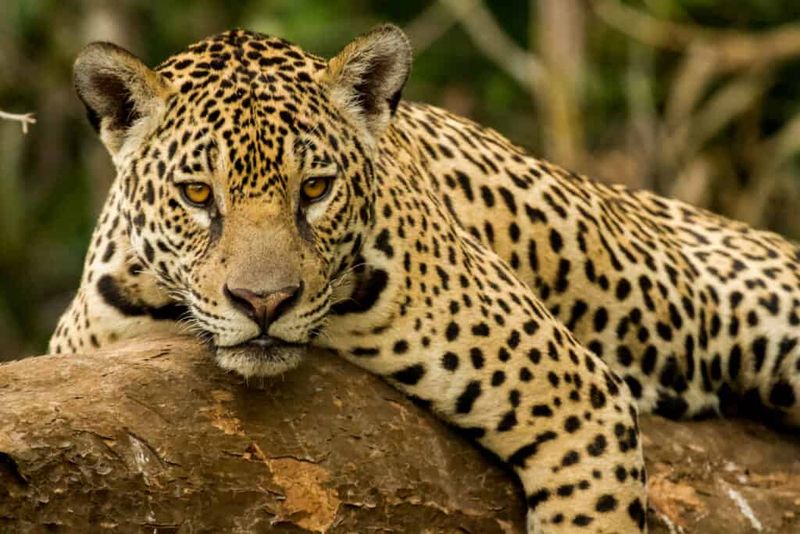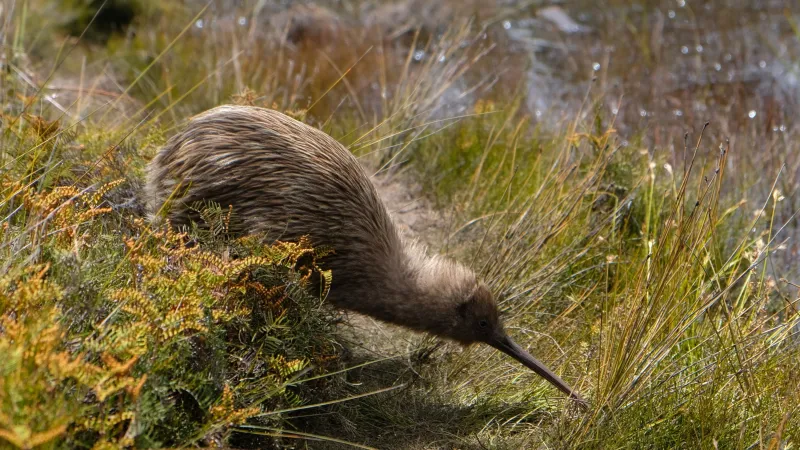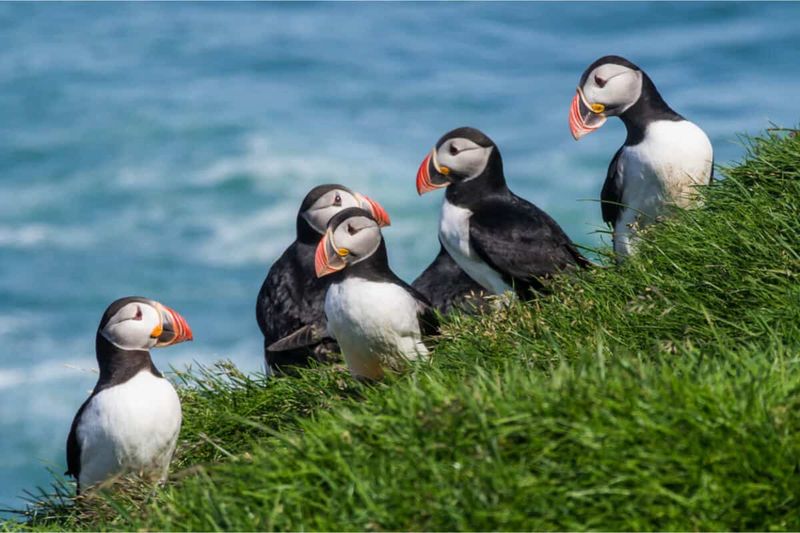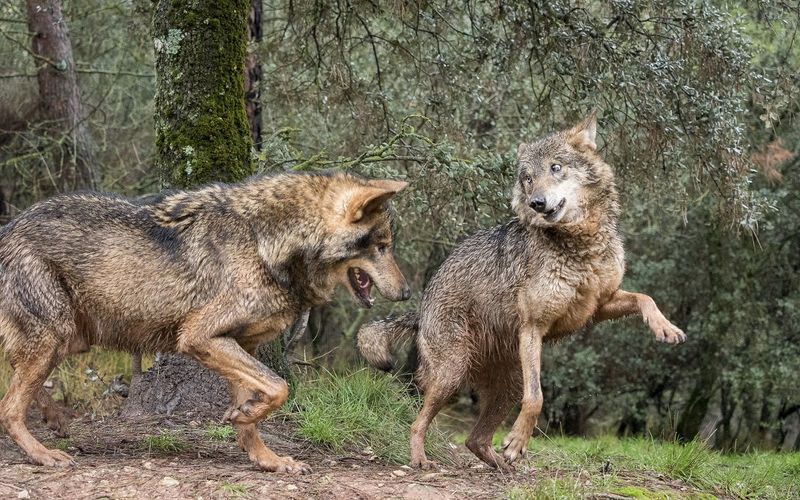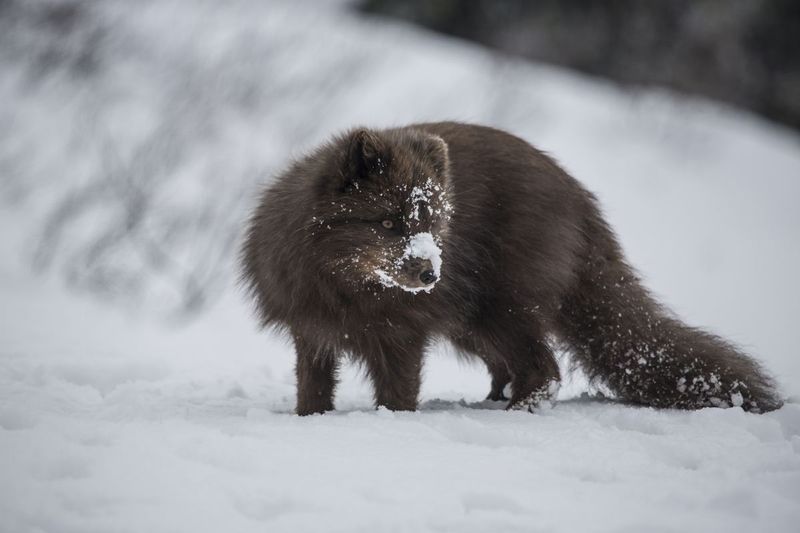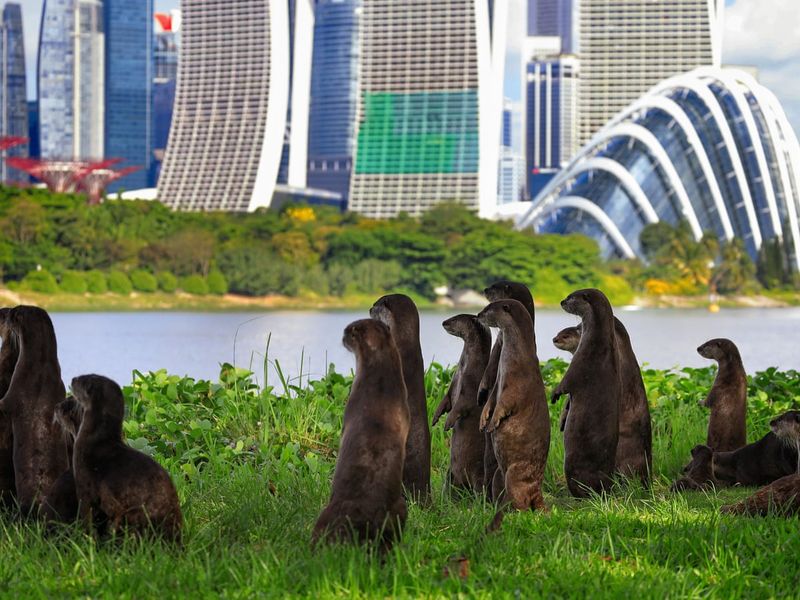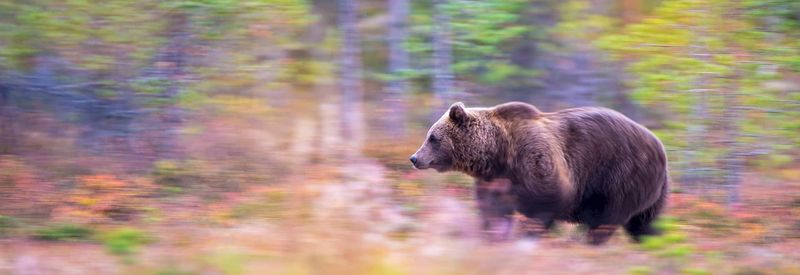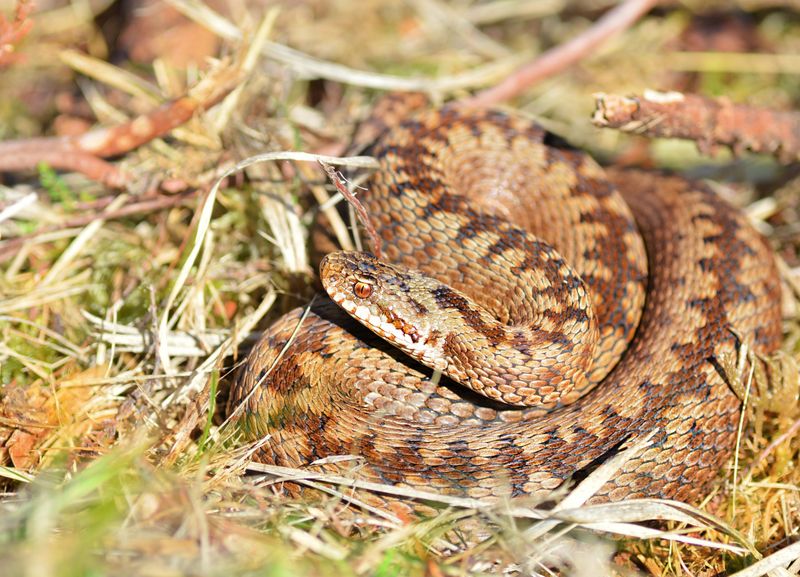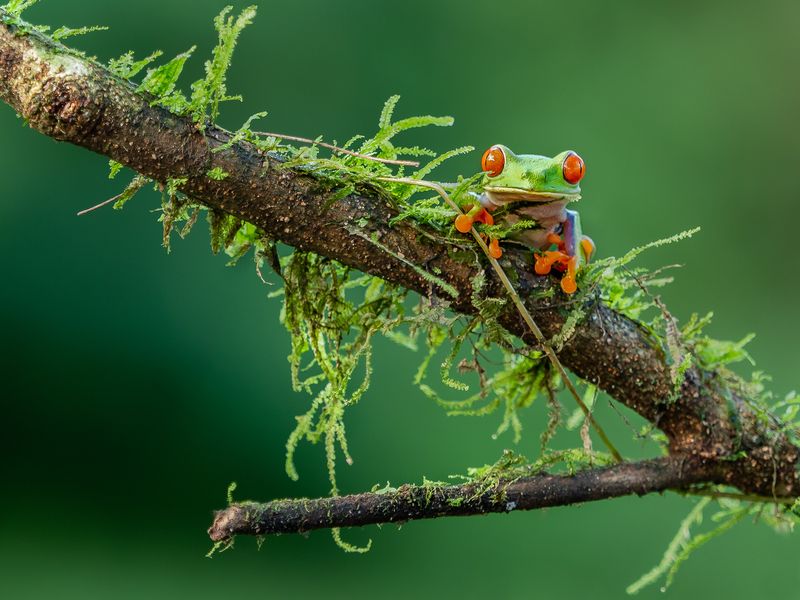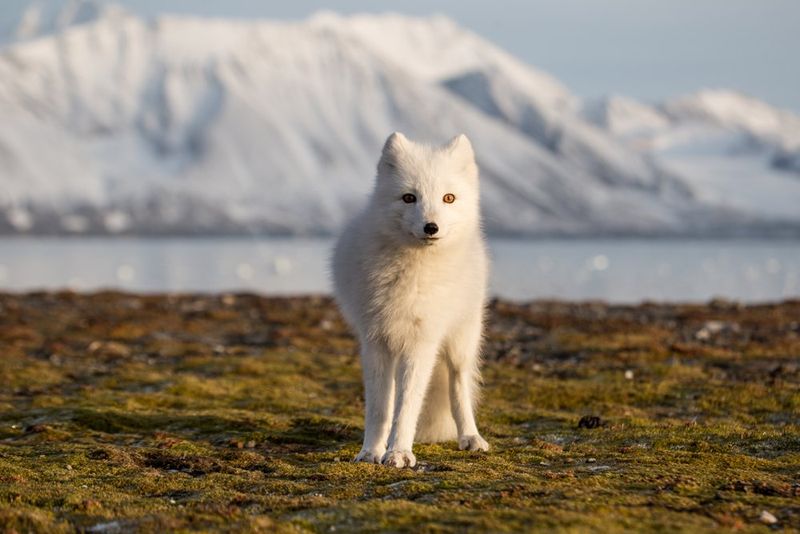📖 Table of Content:
The world is home to a diverse array of wildlife, some of which pose significant risks to humans. Conversely, certain regions are notably free from dangerous animals. Here’s an overview of countries with the deadliest wildlife and those with minimal threats:
1. Australia
Australia, with its vast landscapes, is home to some of the world’s most dangerous creatures. The inland taipan, known as the most venomous snake globally, slithers through the arid regions, while the box jellyfish lurks in northern waters. Its tentacles can deliver a potent sting, causing heart failure within minutes.
Yet, despite these risks, Australians boast a unique relationship with their wildlife. They respect and understand the creatures sharing their land. The diversity of species, from kangaroos to deadly spiders, forms an integral part of Australia’s rich ecological tapestry.
2. Brazil
In Brazil, the Amazon rainforest is a realm of both wonder and danger. It’s a vast, green labyrinth where piranhas, lurking beneath serene waters, could turn predatory in an instant. Anacondas, the world’s largest snakes, glide silently through the thickets, while venomous spiders spin their webs in the undergrowth.
This intricate ecosystem, while perilous, is a testament to nature’s brilliance and balance. Many species remain undiscovered, adding to the allure and trepidation experienced by those who venture into its depths. Brazil’s wildlife is as enchanting as it is deadly.
3. India
India’s wildlife is as diverse as its culture. Among its most infamous residents are the venomous snakes, including the fearsome Indian cobra and the swift saw-scaled viper. These reptiles contribute to the high incidence of snakebite fatalities in rural areas.
India is also home to majestic predators like Bengal tigers, whose stealth and power are legendary. Yet, this subcontinent harbors more than just danger. Its vibrant ecosystems, from the deserts of Rajasthan to the lush Western Ghats, support an incredible range of life, captivating those who explore its wild corners.
4. Indonesia
An archipelago of intrigue, hosts the formidable Komodo dragon, the largest lizard on earth. Found on Komodo Island, these reptiles can grow over three meters long and have a venomous bite that can incapacitate prey.
The waters surrounding Indonesia are equally treacherous, home to venomous sea snakes and vibrant, yet dangerous, coral reefs. Despite these hazards, Indonesia’s landscapes, from lush rice terraces to active volcanoes, offer breathtaking beauty and biodiversity. It’s a land where danger and allure coexist in a delicate dance.
5. South Africa
Renowned for its Big Five game animals, is a haven for both wildlife lovers and thrill-seekers. Lions, leopards, rhinos, elephants, and Cape buffalo roam the savannahs, embodying the raw power and beauty of the African wilderness.
The black mamba, one of the world’s most venomous snakes, adds to the danger with its speed and potent venom. Yet, South Africa’s dedication to conservation has preserved these majestic creatures, offering a glimpse into a world both ancient and untamed. It’s a land where the call of the wild is ever-present.
6. Mexico
A land of contrasts, is home to a variety of venomous creatures. The bark scorpion, lurking in its arid deserts, is known for its painful sting. Meanwhile, the coral snake, with its distinctive bright bands, slinks through the underbrush, a symbol of nature’s vibrant yet perilous creativity.
While these creatures pose threats, Mexico’s ecosystems also support rich biodiversity that captivates scientists and tourists alike. From the coastal jungles teeming with life to the serene deserts, Mexico’s wildlife is both a marvel and a caution.
7. Colombia
Colombia, with its lush rainforests and cloud-covered mountains, is home to the golden poison dart frog, one of the most toxic animals on earth. Just a single touch can be lethal, highlighting nature’s extraordinary defenses.
Jaguars, with their stealth and strength, roam these forests, embodying the mystery and majesty of Colombia’s wild heart. Despite the dangers, this biodiversity hotspot is a treasure trove for scientists and adventurers, revealing new species and natural wonders at every turn. Colombia’s wildlife is as enchanting as it is daunting.
8. Philippines
An archipelago of over 7,000 islands, harbors a variety of dangerous creatures. The Philippine cobra, with its potent neurotoxic venom, poses a significant threat, especially in rural areas. The deadly box jellyfish lurks in its warm coastal waters, a silent hazard to swimmers.
Yet, the Philippines is a land of stunning beauty, where vibrant coral reefs and lush jungles teem with life. The contrast between its perilous wildlife and picturesque landscapes draws those seeking both adventure and serenity. Philippines is a blend of danger and delight.
9. Democratic Republic of the Congo
The Democratic Republic of the Congo, with its vast rainforests and savannas, faces the persistent threat of malaria from the Anopheles mosquito. Venomous snakes and large carnivores further contribute to the country’s challenging wildlife landscape.
Despite these dangers, the Congo’s ecosystems are vital for biodiversity, supporting a myriad of species, including elephants and gorillas. Its rich natural resources and wildlife are invaluable, offering both challenges and opportunities to those who venture into its heart. The Congo is a place of both peril and promise.
10. Venezuela
Venezuela’s portion of the Amazon basin is a habitat of awe and danger. Anacondas, among the world’s largest snakes, glide stealthily through the waterways. Jaguars, with their powerful build and elusive nature, rule the dense forests.
These formidable creatures are just a glimpse into Venezuela’s rich biodiversity, which also includes venomous snakes and vibrant birdlife. This country’s natural landscapes are as challenging as they are beautiful, offering a wild, untamed environment that captivates adventurers and nature enthusiasts alike. Venezuela’s wildlife is a testament to nature’s raw power.
11. New Zealand
Renowned for its safety from deadly creatures, hosts no venomous snakes or dangerous mammals. Its only native land mammal, the bat, is a harmless nocturnal flier. This unique lack of dangerous wildlife makes New Zealand a paradise for outdoor enthusiasts.
The country’s stunning landscapes, from lush green hills to tranquil fjords, offer peace and adventure without the worry of perilous encounters. Its ecosystems house diverse species, showcasing nature’s creativity without the threat of venom or claws. New Zealand truly embodies tranquility amidst nature’s splendor.
12. Iceland
An island shaped by fire and ice, is free of venomous snakes and large predators. Its wildlife, including birds and marine life, poses no significant threat to humans, making it a sanctuary of safety.
Visitors can explore its dramatic landscapes, from volcanic craters to serene glaciers, without fear. Iceland’s ecosystems thrive under harsh conditions, revealing nature’s resilience and beauty. This tranquil environment allows for a connection with the natural world, offering both solace and adventure. Iceland is a haven where nature’s wonders can be enjoyed in peace.
13. Ireland
The Emerald Isle, is known for its gentle landscapes and equally gentle wildlife. It has no native venomous snakes, a legacy attributed to St. Patrick. The absence of dangerous mammals makes Ireland a safe haven for both locals and tourists.
Its rolling green hills and ancient woodlands offer a serene escape into nature, where wildlife can be enjoyed in harmony. This peaceful coexistence highlights Ireland’s charm, where folklore and nature intertwine. The country’s lack of perilous wildlife invites exploration and appreciation of its tranquil beauty.
14. Greenland
Greenland, with its vast icy wilderness, is home to wildlife that poses minimal threat to humans. While polar bears are present, they are rarely encountered by the average visitor. Instead, the Arctic fox and various bird species dominate the serene landscapes.
The harsh climate shapes its unique ecosystems, fostering resilience among its inhabitants. Greenland’s remote beauty offers a quiet refuge for those seeking solitude amidst nature’s extremes. It’s a place where the silence of the ice speaks volumes, inviting introspection and awe.
15. Singapore
A bustling city-state, is largely free from dangerous wildlife due to its urban landscape. The few venomous snakes that exist are rarely encountered, making it a safe urban jungle.
The city is a blend of modernity and nature, where lush gardens and parks offer a respite from urban life. This coexistence of city and greenery highlights Singapore’s commitment to maintaining a harmonious balance with nature. Its safety and biodiversity make it an attractive destination for those seeking urban excitement without wildlife hazards.
16. Finland
A land of a thousand lakes, offers a safe haven where wildlife encounters are rarely dangerous. While brown bears and wolves inhabit its forests, these animals are shy and tend to avoid humans.
The country’s vast wilderness provides a sanctuary for nature lovers, offering a peaceful retreat into the heart of the forest. Finland’s wildlife is a testament to the harmonious coexistence between humans and nature, where animals roam freely yet peacefully. It’s a place where the call of the wild is gentle and inviting.
17. United Kingdom
The United Kingdom, with its charming countryside, is home to only one venomous snake, the adder, which poses little threat to humans. The absence of large predators further ensures a safe experience for nature enthusiasts.
Its landscapes, from rolling hills to rugged coastlines, beckon exploration and admiration. The UK’s wildlife reflects its temperate climate and gentle natural beauty, offering a serene environment for both residents and visitors. The safety and accessibility of its wildlife make the UK a preferred destination for peaceful outdoor adventures.
18. Costa Rica
A biodiversity hotspot, teems with life yet poses minimal threat to humans. While it boasts an array of wildlife, from colorful birds to playful monkeys, dangerous encounters are rare.
The country’s dense jungles and pristine beaches offer a paradise for ecotourists seeking adventure and tranquility. Costa Rica’s commitment to conservation ensures that its natural treasures remain unspoiled and accessible. It’s a land where nature’s wonders can be appreciated in safety, providing an enriching experience without the shadow of danger.
19. Norway
Known for its stunning fjords and northern lights, is notably free from venomous snakes and large predators. Its wildlife, including reindeer and various birds, coexists peacefully with human populations.
The country’s dramatic scenery offers an awe-inspiring backdrop for those seeking solitude and connection with nature. Norway’s ecosystems thrive, showcasing the beauty of nature without the threat of perilous encounters. This safety, combined with its natural allure, makes Norway a haven for outdoor enthusiasts and nature lovers.
